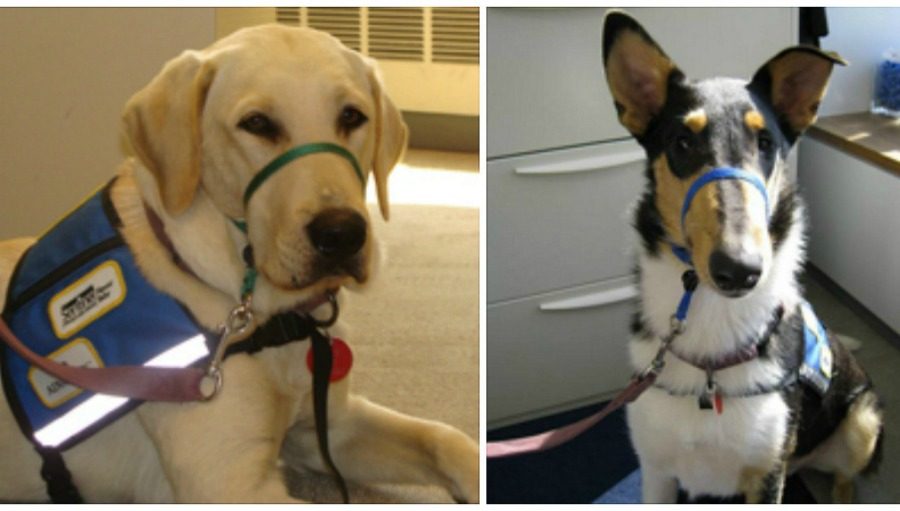Service Dogs
January 19, 2017
Dogs. Man’s best friend. These playful pooches brighten many a home with their exuberance and comfort. But dogs can do more than just be a fabulous pet, they can be a great helper to those with disabilities.
Enter Service Dogs!
Service dogs are defined as “dogs that have been individually trained to perform a specific task for individuals who have disabilities” by the United States Dog Registry. There are many different kinds of Service Dogs and each kind does something different to help their owner.
Some dogs are trained to help with physical disabilities, such as being trained to bark when their owner is having a seizure or being trained to guide a blind person. Others are trained to help with mental disabilities, such as providing comfort and stability to someone suffering from PTSD (Post-Traumatic Stress Disorder) or helping someone with Autism or Down Syndrome. Some dogs can even be trained to help the owner carry things and turn off lights!
When children have mental disabilities such as Down Syndrome, having a service dog can provide a bridge between them and other children, preventing the disabled child from being isolated and providing comfort and stability in new environments.
There are a few very important things to understand about service dogs. They are not pets! Most service dogs wear a vest that clearly states “Working/Service Dog. Do Not Pet/Distract!” It is very important to follow these rules, because if a service dog is distracted it could have serious consequences for the owner with the disability.
Secondly, service dogs are allowed places other dogs are not. A service dog can fly on a plane, go into restaurants and businesses, and enter other places that are usually pet-free.
Thirdly, if you see a service dog but the owner does not look like they have a disability, you are not allowed to ask what the person’s disability is. That is private information and the owner probably will not tell you. Also, it’s just rude. You are, however, allowed to ask two questions. These are, “Is that a service dog?” and, “What task is it trained to do?” Anything other than these two questions is none of your business.
The most common breeds of service dogs include German Shepherds, Golden Retrievers, and Labradors. However, according to Service Dog Central, other breeds are becoming popular for different jobs. Some people who live in apartments opt for a smaller dog, such as a cockier spaniel or chihuahua, as long as the small dog can do the job just as well as a larger one. Also, for those who have allergies, hypoallergenic dogs, like standard poodles, can be trained as service dogs.
Service dogs have been around for many years. Pictures of dogs assisting people have been found in Ancient Rome and China. The first kind of service dogs in the USA were seeing eye dogs for the blind. According to Assistance Dogs, “Morris Frank and seeing eye dog Buddy made history in 1928 when they arrived in New York City as the first dog guide team in the United States.” It took a few years, but soon other types of service dogs were recognized and given the same access as seeing eye dogs.
There are many service dog agencies, some of which breed the dogs and train then from puppy-hood and others which rescue the dogs and then train them. No matter how they became service dogs, these animals have improved the lives of many people with all sorts of disabilities throughout history. How these wonderful, lovable creatures have been a blessing!
















